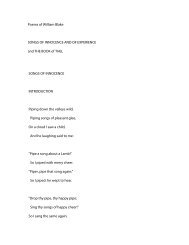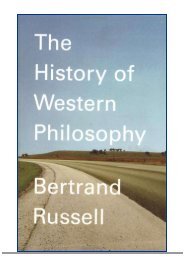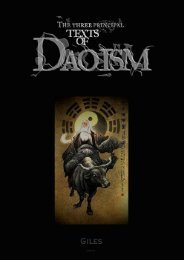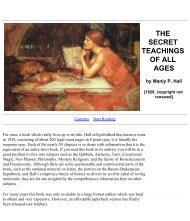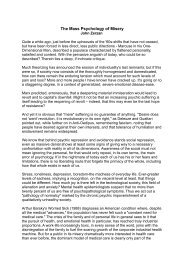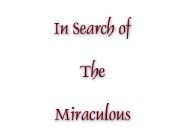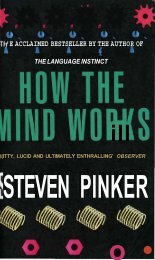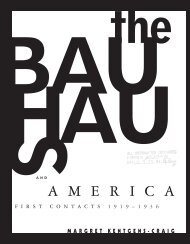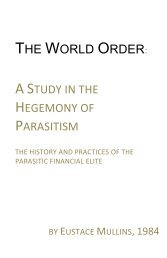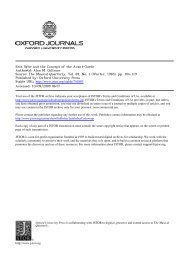The Ever-Present Origin - Michael Goodnight - Editor
The Ever-Present Origin - Michael Goodnight - Editor
The Ever-Present Origin - Michael Goodnight - Editor
- No tags were found...
Create successful ePaper yourself
Turn your PDF publications into a flip-book with our unique Google optimized e-Paper software.
identity, or with his being equated with an object. Although this newmethod is still in its infancy, we are nevertheless compelled to make useof it.In summary, it should be said that our description does not deal with anew image of the world, nor with a new Weltanschauung, nor with a newconception of the world. A new Image would be no more than the creationof a myth, since all imagery has a predominantly mythical nature. A newWeltanschauung wouldbe nothing else than a new mysticism andirrationality, as mythical characteristics are inherent in all contemplationto the extent that it is merely visionary; and a new conception of the worldwould be nothing else than yet another standard rationalistic constructionof the present, for conceptualization has an essentially rational andabstract nature.Our concern is with a new reality - a reality functioning and effectualintegrally, in which intensity and action, the effective and the effect coexist;one where origin, by virtue of "presentiation," blossoms forth anew;and one in which the present is all-encompassing and entire. Integralreality is the world's transparency, a perceiving of the world as truth: amutual perceiving and imparting of truth of the world and of man and ofall that transluces both.Gebser Texte<strong>The</strong> <strong>Ever</strong>-present <strong>Origin</strong>. Part OneChapter Two<strong>The</strong> Three European Worlds1. <strong>The</strong> Unperspectival World<strong>The</strong> transformation of European sensitivity to, and comprehension of, theworld is nowhere more clearly discernible than in painting andarchitecture. Only our insight into this transformation can lead to a properunderstanding of the nature and meaning of new styles and forms ofexpression.Restricting ourselves here primarily to the art of the Christian era, we candistinguish two major self-contained epochs among the many artisticstyles, followed today by an incipient third. <strong>The</strong> first encompasses the eraup to the Renaissance, the other, now coming to a close, extends up to thepresent. <strong>The</strong> decisive and distinguishing characteristic of these epochs isthe respective absence or presence of perspective; consequently we shalldesignate the first era as the "unperspectival," the second as the"perspectival," and the currently emerging epoch as the "aperspectival."'9



